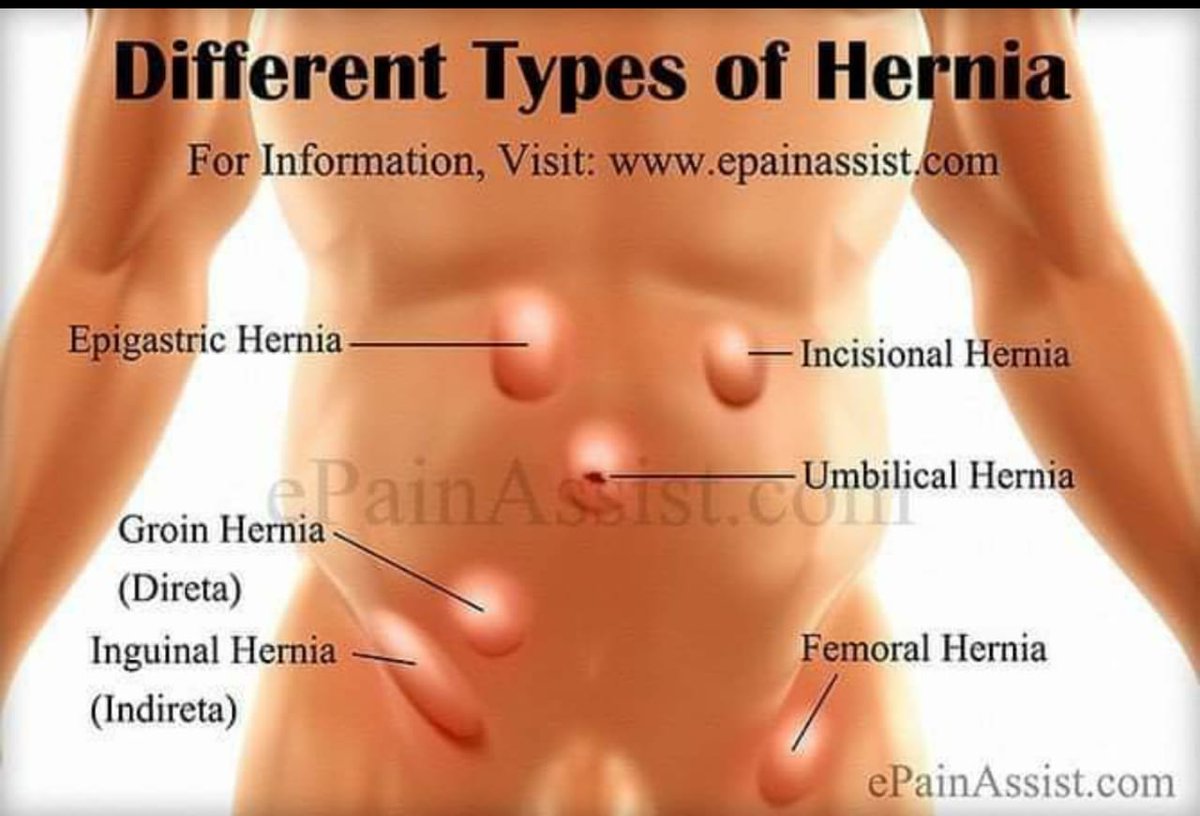What s hernia. What is a Hernia? Inguinal, Incisional, Umbilical, Hiatal, and Femoral Hernias
What is a hernia? What are the different types of hernias, such as inguinal, incisional, umbilical, hiatal, and femoral hernias? Learn about the causes, symptoms, and treatment options for various types of hernias.
Understanding Hernias: An Overview
A hernia occurs when an organ or fatty tissue protrudes through a weak spot in the surrounding muscle or connective tissue, called fascia. Hernias can happen in various areas of the body, most commonly in the abdomen, groin, or near surgical incisions. While some hernias may not require immediate treatment, others can lead to serious complications and require emergency medical attention.
Types of Hernias
Inguinal Hernias
Inguinal hernias are the most common type of hernia, accounting for around 75% of all hernias. They occur when part of the intestine or other abdominal contents push through a weakness in the lower abdominal wall, affecting the inguinal canal. Inguinal hernias can be either indirect, where the hernia enters the inguinal canal, or direct, where it goes straight through the abdominal wall.
![]()
Incisional Hernias
Incisional hernias develop after a person has had surgery, where the tissue protrudes through the surgical incision scar. These hernias are more common in people who have had emergency surgery, gain a lot of weight, exercise too soon or too heavily after the surgery, or have an infection at the incision site.
Umbilical Hernias
Umbilical hernias occur when fat or part of the intestine pushes through the abdominal wall near the belly button. They are the second most common type of hernia and are more prevalent in newborns, especially those born prematurely, as well as in adults who are overweight or have had multiple pregnancies.
Hiatal Hernias
Hiatal hernias occur when part of the stomach protrudes through the diaphragm, the muscle that separates the chest and abdominal cavities. This type of hernia is often associated with acid reflux and can lead to serious complications if left untreated.
Femoral Hernias
Femoral hernias are less common, accounting for only a small percentage of all hernias. They occur when part of the intestine or other abdominal contents push through the femoral canal, a weak spot in the groin area. Femoral hernias are more prevalent in older women.

Causes and Risk Factors
Hernias are ultimately caused by a combination of pressure and a weakness or opening in the surrounding muscle or connective tissue. Anything that increases abdominal pressure, such as heavy lifting, persistent coughing, or constipation, can contribute to the development of a hernia. Additionally, factors like obesity, poor nutrition, and smoking can weaken the muscles and make someone more susceptible to developing a hernia.
Symptoms and Complications
The most common symptom of a hernia is a bulge or lump in the affected area. This lump may disappear when lying down or become more pronounced when coughing, standing, or straining. Hernias can also cause pain, especially when the protruding tissue becomes trapped or strangulated, cutting off the blood supply.
If a hernia becomes incarcerated, meaning the protruding tissue gets stuck and cannot be pushed back in, or if it becomes strangulated, cutting off the blood supply, it is considered a medical emergency and requires immediate treatment to prevent serious complications, such as tissue damage or bowel obstruction.
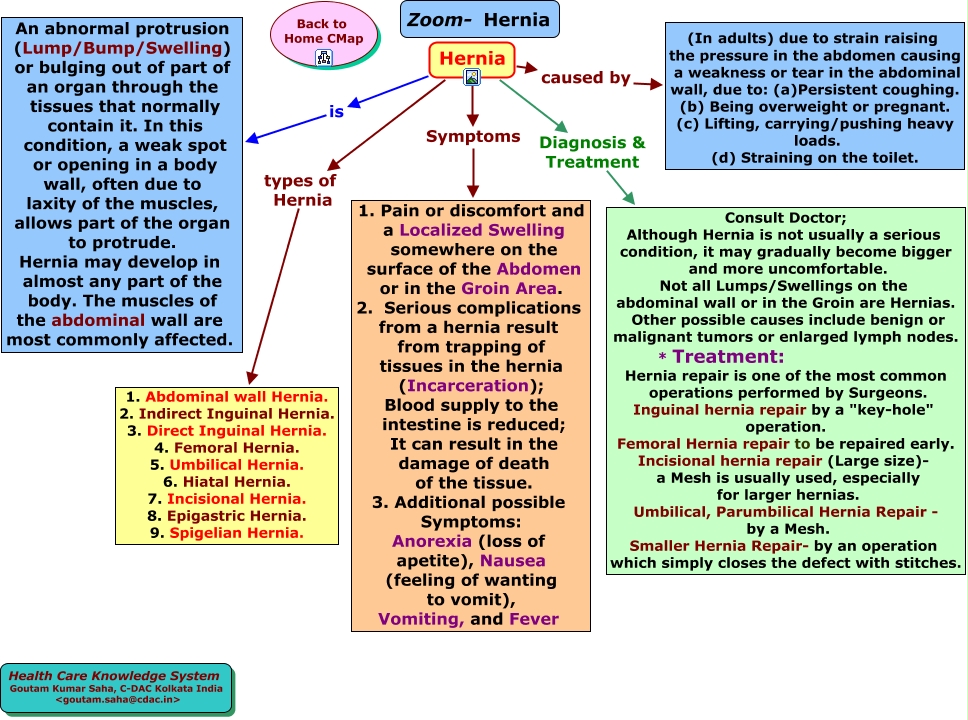
Diagnosis and Treatment
Hernias are typically diagnosed through a physical examination, during which the doctor will look for a bulge or lump and may ask the patient to cough or strain to help identify the hernia. Imaging tests, such as an ultrasound or CT scan, may be used to confirm the diagnosis or determine the extent of the hernia.
The treatment for a hernia depends on the type, size, and severity of the condition. In some cases, a hernia may be monitored through watchful waiting, especially if it is small and not causing any symptoms. However, most hernias require surgical repair, either through an open or laparoscopic procedure, to prevent complications and reduce the risk of recurrence.
Preventing and Managing Hernias
While some risk factors for developing a hernia, such as age or genetic predisposition, cannot be controlled, there are steps people can take to reduce their chances of developing a hernia or to manage an existing one. These include maintaining a healthy weight, avoiding heavy lifting, treating chronic cough or constipation, and seeking prompt medical attention if a hernia develops.

What Is a Hernia? Inguinal, Incisional, Umbilical, Hiatal, and Femoral Hernias
Written by WebMD Editorial Contributors
- What Is a Hernia?
- Hernia Causes
- Types of Hernias
A hernia happens when an organ or fatty tissue squeezes through a weak spot in a surrounding muscle or connective tissue called fascia. They often occur where the abdominal wall is weaker, such as in the abdomen (belly area) or groin, and can have various causes.
Hernias can be painful. In some cases, they need emergency treatment. Call 911 right away if:
- Your hernia is extremely painful, growing quickly, swollen, or red.
- You vomit or feel nauseous.
- You have constipation or bloating.
- You have a fever.
In a reducible hernia, the lump can be pushed back through the abdominal wall. If not, it’s an irreducible hernia, which is more likely to have serious complications.
A hernia is an emergency if it is “incarcerated. ” In an incarcerated hernia, tissue (such as from the bowel) has slipped through the hernia and gotten stuck there. Stool may not be able to get through normally, which can cause pain, nausea, vomiting, and even tear the bowel wall. If an incarcerated hernia becomes “strangulated,” the bowel tissue has started to die and needs emergency surgery.
” In an incarcerated hernia, tissue (such as from the bowel) has slipped through the hernia and gotten stuck there. Stool may not be able to get through normally, which can cause pain, nausea, vomiting, and even tear the bowel wall. If an incarcerated hernia becomes “strangulated,” the bowel tissue has started to die and needs emergency surgery.
Ultimately, all hernias are caused by a combination of pressure and an opening or weakness of muscle or fascia. The pressure pushes an organ or tissue through the opening or weak spot. Sometimes the muscle weakness is present at birth. But more often, it happens later in life.
Anything that causes an increase in pressure in the abdomen can cause a hernia, including:
- Lifting heavy objects without stabilizing the abdominal muscles
- Diarrhea or constipation
- Persistent coughing or sneezing
In addition, obesity, poor nutrition, and smoking can weaken muscles and make hernias more likely.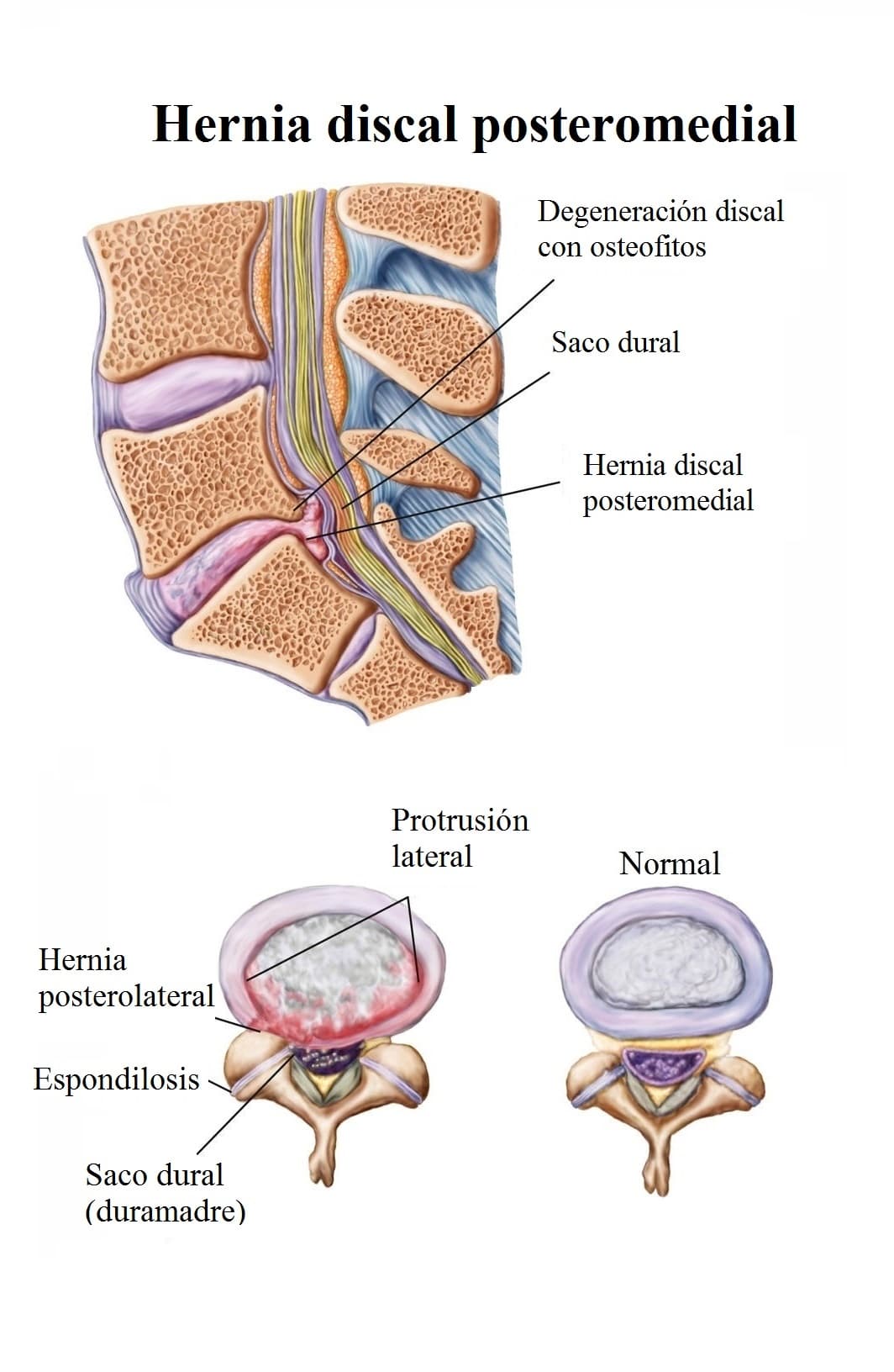
The most common types of hernia are inguinal (inner groin), incisional (resulting from a surgical cut, or incision), femoral (outer groin), umbilical (belly button), and hiatal (upper stomach).
Groin hernias
About 3 out of every 4 hernias are in the groin. There are two types: inguinal and femoral.
Almost all groin hernias are inguinal. You get them when part of your intestine pushes through a weakness in the lower belly and affects an area of the groin called the inguinal canal.
There are two kinds of this hernia:
- Indirect. The more common type; it enters the inguinal canal.
- Direct. It does not enter the inguinal canal but goes straight through the bowell wall.
They’re much more common in men than women, but they’re not limited to adults.
With an inguinal hernia, you’ll probably see a lump where your thigh and groin come together. It may seem to go away when lying down, but you see it clearly when you cough, stand, or strain.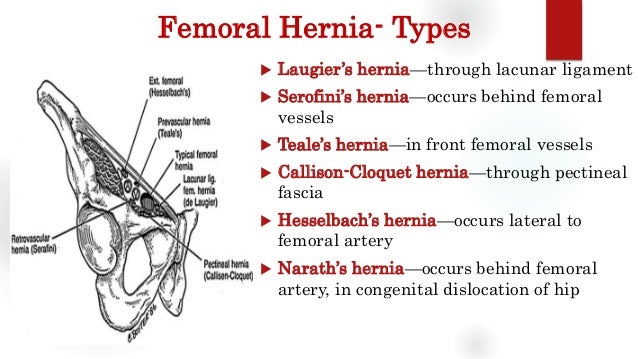
Generally, these hernias aren’t dangerous. Your doctor may consider watchful waiting, or monitoring the hernia.
Femoral hernias account for only a few out of every 100. They’re more common in older women. They are often mistaken for inguinal hernias.
Femoral hernias bulge into a different area of the groin called the femoral canal. You might see a lump right around the crease of the groin or just into the upper thigh.Your doctor will likely recommend that you get surgery for a femoral hernia instead of watchful waiting, since they are more likely to get stuck without being reducible.
Umbilical hernias
This is the second most common type of hernia. Umbilical hernias happen when fat or part of the intestine pushes through muscle near the belly button. They’re more common in newborns, especially in those born earlier than expected and babies under 6 months old. But adults can get them, too.
Women are more likely than men to get an umbilical hernia. Your chances are also higher if you:
Your chances are also higher if you:
- Are overweight
- Have been pregnant more than once
- Have a lot of belly fluid (a condition called ascites)
- Have a long-term cough
- Have trouble peeing because of an enlarged prostate
- Are constipated for long periods of time
- Vomit repeatedly
What all of these risk factors have in common is increased pressure in the abdomen that pushes the hernia out.
Incisional hernias
If you have surgery in which a doctor makes an opening through your belly, you might get an incisional hernia later. Tissue can poke through where the skin has been weakened by a scar left after surgery. Like groin hernias, they can lead to more serious problems if they’re not repaired.
Incisional hernias are common in people who have had an operation, especially emergency surgery. You can be more likely to get one if you do any of these things before your incision heals completely:
- Gain a lot of weight
- Exercise too soon or too heavily
- Get pregnant
Your chances are also higher if the wound gets infected or if you:
- Are a man over 60
- Are obese
- Have long-term lung disease
- Have diabetes or kidney failure
- Smoke
- Take long-term medications like steroids or drugs that affect your immune system
These are a little different from the other types of hernias because of where they happen.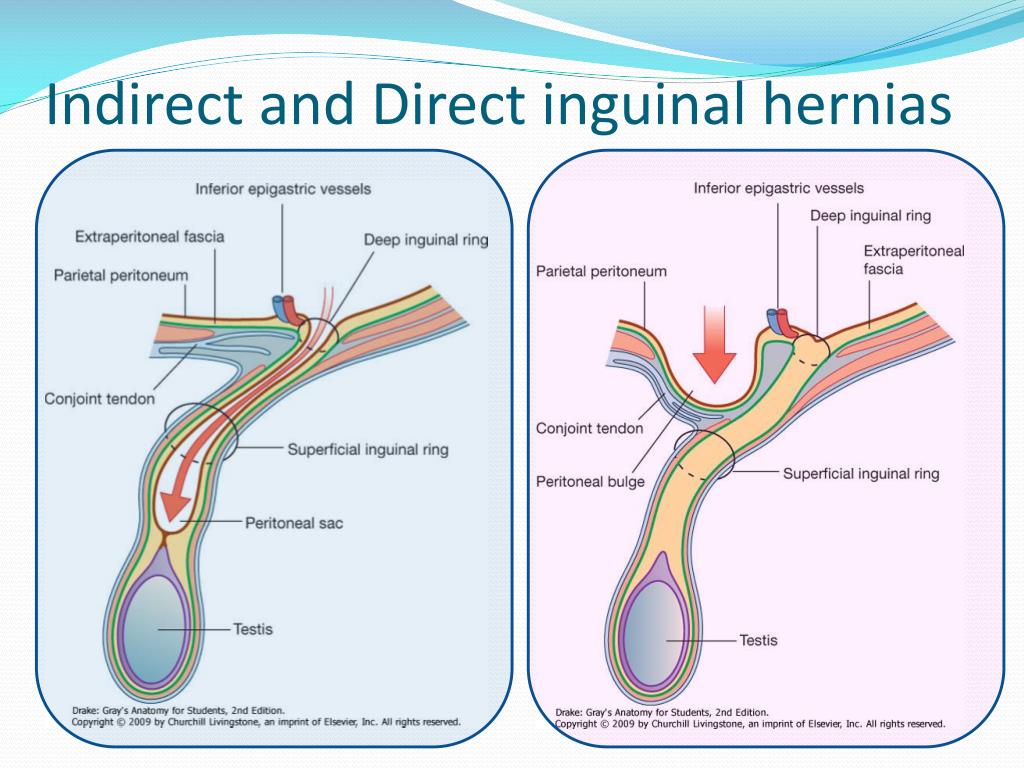
Hiatal hernias involve your diaphragm, the sheet of muscle that separates your chest from your belly. Your esophagus runs from your throat to your stomach and passes through an opening in the diaphragm.
With a hiatal hernia, part of the stomach bulges up through this opening and into the chest. You won’t see any lump, but you might get heartburn or chest pain and notice a sour taste in your mouth.
Although they’re the most common hernias seen in pregnant women, this type of hernia is most often found in people over age 50.
Other types of hernias
Less common types of hernias include:
- Epigastric hernia. This is when fat pushes through the belly somewhere between the belly button and lower part of the breastbone. These show up in men more often than women.
- Giant abdominal wall hernia. You might get one of these if you have an incisional hernia or some other kind that’s hard to treat and keeps coming back.

- Spigelian hernia. You get this type when fat tissue pushes through muscle below your belly button along the bottom edge of where your six-pack might be.
Top Picks
Ventral (Abdominal) Hernia | Johns Hopkins Medicine
What is a ventral hernia?
A ventral (abdominal) hernia refers to any protrusion of intestine or other tissue through a weakness or gap in the abdominal wall. Umbilical and incisional hernias are specific types of ventral hernias.
Ventral Hernia Causes
The cause of a ventral hernia can differ depending on its location as well as your medical history, health and personal anatomy. The weakness in the abdominal wall through which the intestine protrudes may be part of your body’s natural formation. It can also result from:
Ventral Hernia Diagnosis
To identify a ventral hernia, a health care provider may use multiple diagnostic techniques but will begin with a medical history and physical examination. The provider will inquire about and/or look for:
Constipation, “narrow” or “thin” stool
Lump or protrusion in the abdomen; you may be asked to stand and cough, which increases abdominal pressure and makes the hernia more pronounced and easier to diagnose
Nausea, vomiting, fever or rapid heart rate
Pain in the abdomen, especially around the protrusion
If the protruding portion of intestine has become trapped (incarcerated) within the abdominal wall, the blood supply to the intestine can get cut off. This may cause further complications such as necrosis (tissue death). If your provider suspects this is the case, additional diagnostics may include:
This may cause further complications such as necrosis (tissue death). If your provider suspects this is the case, additional diagnostics may include:
Blood tests to look for infections caused by intestinal blockage or necrosis
Ultrasound, MRI, CT or other imaging to check for blockage or actual location of the intestinal protrusion
Ventral Hernia Treatments
Specific treatment for a ventral hernia will be determined by your doctor based on multiple factors such as your general health, anatomy, extent and location of the hernia, and desired level of future physical activity. Treatment will generally consist of one of two types of surgeries:
Open hernia repair
In this surgical procedure, also known as herniorrhaphy, the surgeon makes an incision in the abdomen above the hernia, pushes any protruding intestine back into the abdomen and repairs the opening in the muscle wall. Sometimes, in a procedure known as hernioplasty, the weak area is repaired and reinforced with mesh.
Laparoscopy
In this minimally invasive surgical procedure, the surgeon makes several small incisions in the lower abdomen and inserts a tubelike instrument equipped with a camera, called a laparoscope, into one of the incisions. The images are displayed on a large monitor that the surgeon uses to guide the operation. Using instruments inserted into the other incisions, the surgeon repairs the hernia with synthetic mesh and sutures or skin glue.
Robotic-assisted repair
Robotic-assisted repair is similar to laparoscopy, but the surgeon operates from a console controlling robotic arms. In this minimally invasive surgical procedure, the hernia contents are returned to their natural position in the abdomen and the muscle wall is repaired and reinforced with mesh.
All about hernias
go back to the outpatient surgery department
ALL ABOUT HERNIAS
What is “hernia”?
A hernia is the protrusion of abdominal organs under the skin through weak points in the abdominal wall. The outgoing organs are located in the hernial sac formed by the peritoneum (the inner lining of the abdominal wall). In the hernial sac, there can be almost any organ of the abdominal cavity (intestinal loops, bladder, less often – the stomach or part of it), the omentum, extremely rarely – the liver, spleen.
The outgoing organs are located in the hernial sac formed by the peritoneum (the inner lining of the abdominal wall). In the hernial sac, there can be almost any organ of the abdominal cavity (intestinal loops, bladder, less often – the stomach or part of it), the omentum, extremely rarely – the liver, spleen.
Fig. Incisional ventral hernia
Why does a hernia occur?
The abdominal wall, consisting of muscles and aponeuroses, performs a number of functions, one of which is to hold the internal organs in a natural position and counteract the intra-abdominal pressure they create. Under the action of intra-abdominal pressure, a defect (hernial orifice) can form in the weakest places of the abdominal wall, through which a hernia emerges. Predisposing factors may contribute to this, such as:
- Increasing intra-abdominal pressure
1. excessive exercise
2. severe cough, including chronic (smoker’s cough)
3.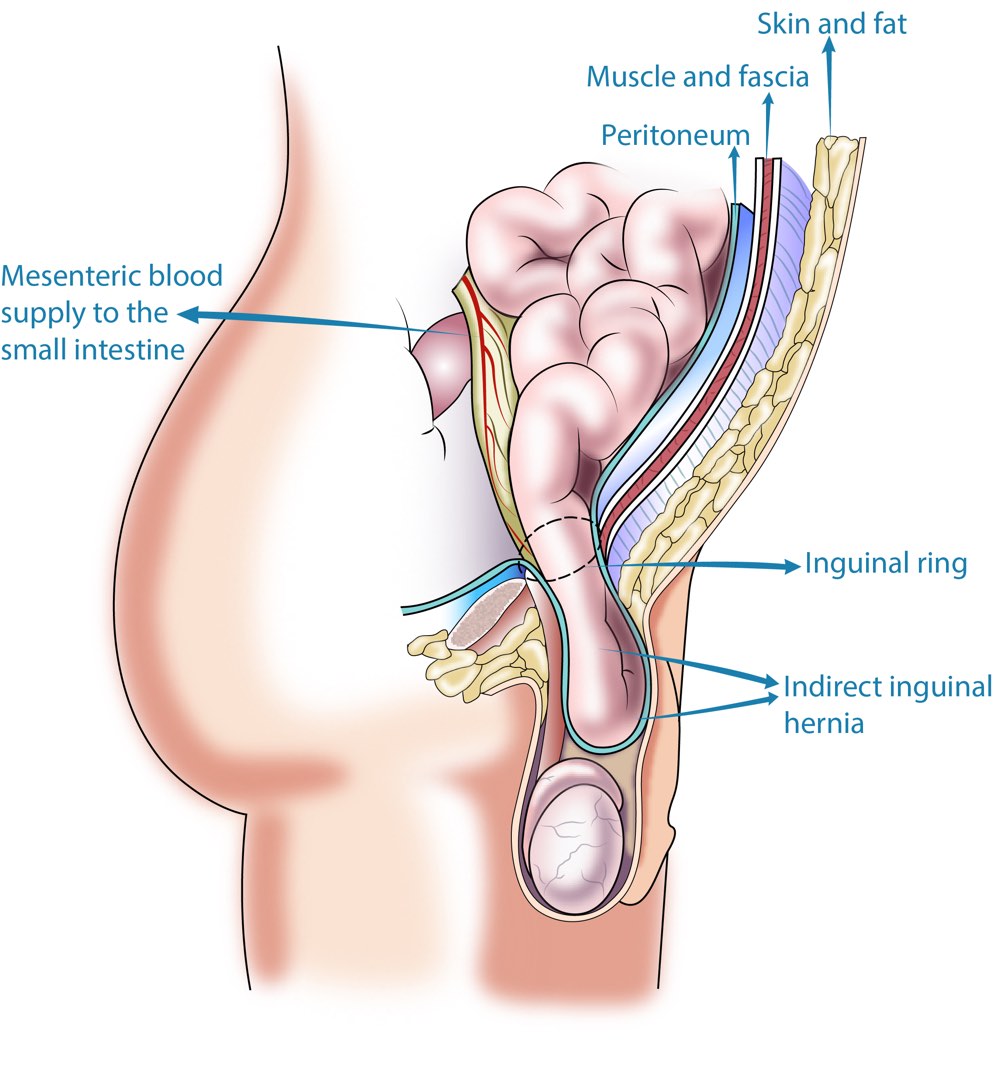 constipation
constipation
900 02 4. diseases in which shortness of breath develops with difficulty exhaling (bronchial asthma)
- Conditions and diseases associated with the development of weakness of the connective tissue (obesity, varicose veins of the legs, congenital pathologies of the connective tissue, hereditary predisposition)
- Patients previously operated on for hernias are also at risk for predisposing factors
- A hernia may go unnoticed or be accompanied by intense pain. In the future, under the influence of the same factors, a gradual increase in hernia occurs, up to the exit of most of the abdominal organs into the hernial sac.
Who can get a hernia?
Any person can develop a hernia, regardless of gender or age.
External signs and symptoms.
The appearance and symptoms of hernias may develop gradually or occur over a short period of time.
- Feeling of pressure, weakness or pain in the abdomen, groin or scrotum, arising or aggravated by exertion, straining.

- Visually defined “bulging”, bulge on the abdomen, in the inguinal region, scrotum, appearing or increasing in size during physical exertion, straining. Also, in the area of the above formations, a feeling of discomfort or pain may appear during physical exertion, coughing, straining.
If you have any of the above symptoms, you should consult your doctor. The sooner the diagnosis is made and treatment is carried out, the higher the chance of preventing the development of complications, sometimes fatal.
Learn more about hernia types.
Fig. Classification of hernias of the anterior abdominal wall
Lumbar hernias of the anterior abdominal wall walls . The main anatomical formations through which lumbar hernial formations arise are the Petit triangle (Petit) and the Greenfelt-Lesgaft gap, aponeurotic fissures.
Petit’s triangle is limited behind by the outer edge of the broad back muscle, in front by the inner edge of the external oblique muscle, from below by the iliac crest. In the region of the Petit triangle, under the superficial fascia and thin aponeurosis, there is an internal oblique muscle.
In the region of the Petit triangle, under the superficial fascia and thin aponeurosis, there is an internal oblique muscle.
Greenfelt-Lesgaft interval often has a quadrangular shape. Its upper border is formed by the lower serratus posterior muscle and the XII rib, medially it is delimited by the longitudinal muscles of the spine, the square muscle of the lower back, and the edge of the internal oblique muscle runs in front and below. The shape and size of the gap can vary depending on the length of the XII rib – with a long rib, the Greenfelt-Lesgaft gap is sometimes absent or looks like a gap, and with a short rib it increases in size.
Aponeurotic fissures usually form at the site of passage of vessels and nerves, but can sometimes appear as a result of rupture or maldevelopment of the aponeurosis. Among the causal factors contributing to the occurrence of hernial formation in these areas is the weakness of the connective tissue and muscle atrophy, inflammatory processes. Hernial protrusions are more common on the left than on the right, bilateral are rare.
Hernial protrusions are more common on the left than on the right, bilateral are rare.
Recurrent hernias
They are a complication of surgical treatment of hernias.
The causes of recurrence of hernial protrusion may be associated with the patient’s lifestyle and structural features of his body.
For example: non-compliance with the terms of the recovery period, when a person begins active physical activity ahead of time.
With age-related changes and a number of pathological conditions, when tissues can become flabby, change elasticity and structure, which also affects the quality and duration of healing after the operation. So in elderly, malnourished or very obese patients, relapses can be observed regardless of the method of operation and the course of the postoperative period
Main causes of recurrent hernias:
- errors related to surgical technique
- connective tissue deficiency
- wound infection during or after surgery
- excessive physical exertion, especially shortly after surgery
The only treatment for recurrent hernias is surgery.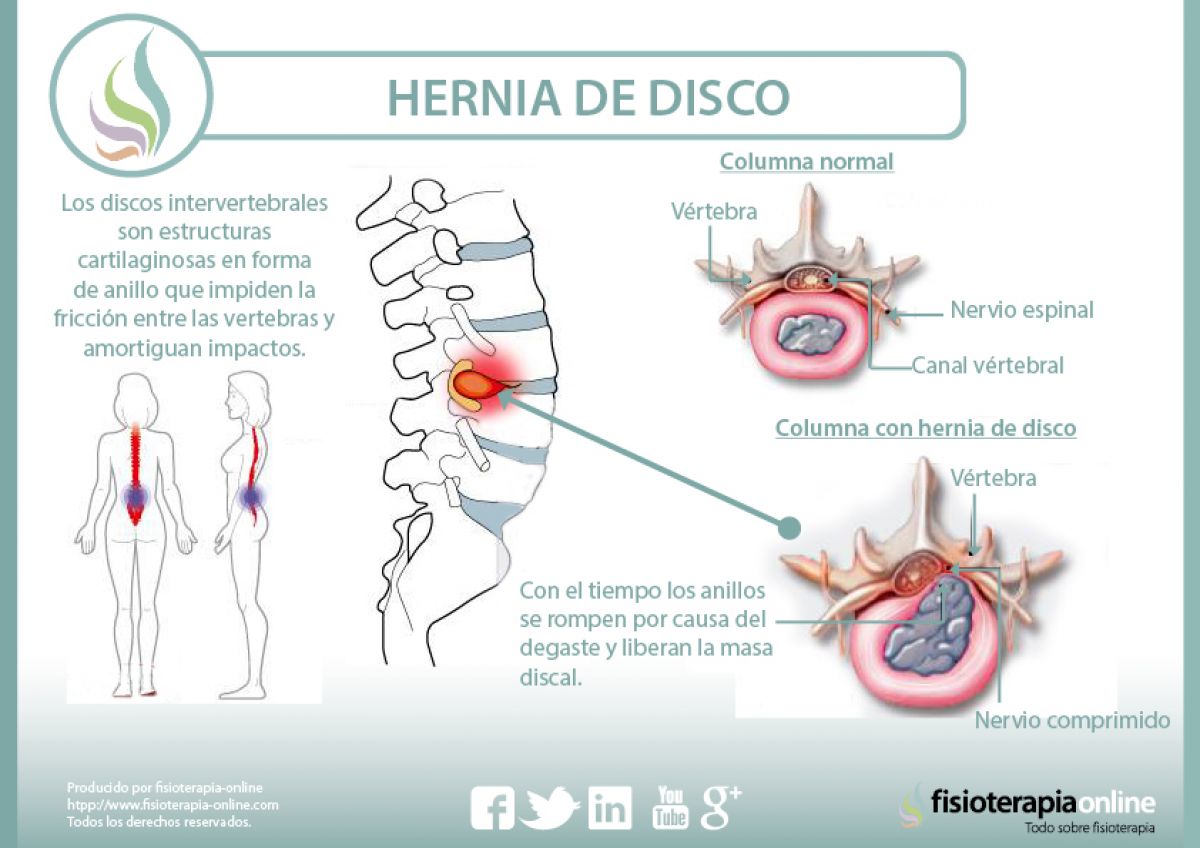 At the same time, various methods of hernioplasty are selected using various mesh prostheses.
At the same time, various methods of hernioplasty are selected using various mesh prostheses.
Fig. Removal of old and deformed graft
Fig. Restoration of the integrity of the inguinal canal and reprosthetic hernioplasty according to Liechtenstein
Why is a hernia dangerous?
In addition to the obvious inconvenience associated with the presence of a cosmetic defect, reduced physical activity and ability to work, a hernia carries the risk of developing a number of complications. These include violations of the functions of organs located in the hernial sac – constipation, urination disorders, with the release of large volumes of organs from the abdominal cavity – respiratory disorders. A formidable complication is the development of hernia incarceration.
Infringement – compression of the hernia in the hernial orifice, resulting in the development of necrosis of the contents of the hernial sac.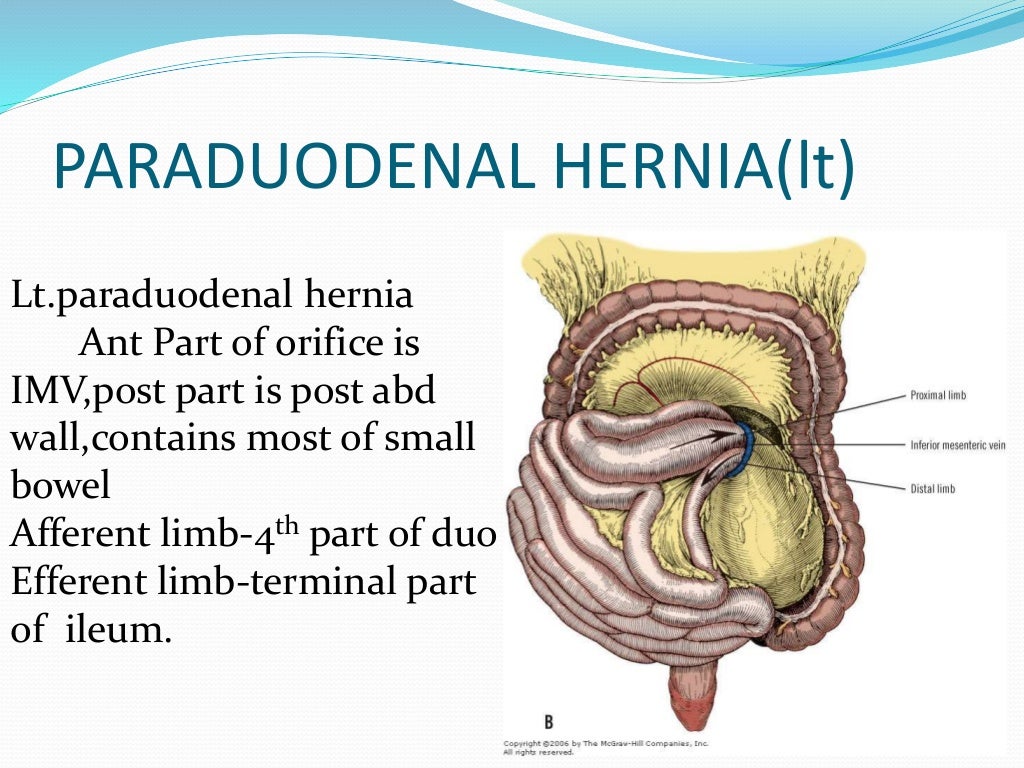 The infringement is accompanied by a sharp pain in the area of the hernial protrusion. The most dangerous in case of infringement is the development of intestinal obstruction (the loop of the intestine is infringed) and the peritonitis that follows it. This situation requires immediate resolution through surgery. By and large, regardless of which organ is the contents of the hernial sac, the end result without appropriate treatment is one – peritonitis, the difference is only in time. Peritonitis – inflammation of the peritoneum – a formidable complication of a large number of diseases, including strangulated hernias, the development of this pathological condition is one of the most difficult problems in surgery. Age, obesity, the presence of concomitant pathology further exacerbate this situation. Without surgery, the only outcome is death. Even if the operation is performed, but more than a day has passed since the infringement began, up to 30% of patients die in the postoperative period.
The infringement is accompanied by a sharp pain in the area of the hernial protrusion. The most dangerous in case of infringement is the development of intestinal obstruction (the loop of the intestine is infringed) and the peritonitis that follows it. This situation requires immediate resolution through surgery. By and large, regardless of which organ is the contents of the hernial sac, the end result without appropriate treatment is one – peritonitis, the difference is only in time. Peritonitis – inflammation of the peritoneum – a formidable complication of a large number of diseases, including strangulated hernias, the development of this pathological condition is one of the most difficult problems in surgery. Age, obesity, the presence of concomitant pathology further exacerbate this situation. Without surgery, the only outcome is death. Even if the operation is performed, but more than a day has passed since the infringement began, up to 30% of patients die in the postoperative period. No need to bring such a small problem as a hernia to such a tragic situation.
No need to bring such a small problem as a hernia to such a tragic situation.
How is a hernia treated?
The only way to treat a hernia in adult patients is to perform an operation (hernia repair).
When should a hernia be treated?
Following from the above, the earlier the operation is done, the better.
Is it possible to do without surgery?
-No.
For adult patients with a hernia, the only treatment is surgery.
Are there any contraindications for surgery?
Herniotomy should not be performed in the presence of severe concomitant pathology, when the operation can only harm, not help. Such cases include: the coming months after myocardial infarction, stroke, a number of other extremely severe comorbidities. It should be remembered that the presence of chronic diseases is not an absolute contraindication to the operation, but only requires appropriate correction in the preoperative period.
Can other surgeries be performed at the same time as hernia surgery?
Yes. An operation for a hernia can be supplemented by almost any surgical intervention.
Often, especially in older patients, there are several problems that require surgical intervention. In such situations, it is preferable to get by with one operation that combines the removal of a hernia and some other problem. The implementation of combined operations is a priority method, as it allows solving two (or more) problems in one surgical intervention, relieves the patient of psycho-emotional problems associated with the need to undergo several operations.
What types of operations are performed to repair a hernia?
To date, more than 300 methods of hernia repair are known – ventral, inguinal, umbilical, femoral, postoperative. But all of them can be fundamentally divided into two groups:
- with plasty with own tissues – tissues of the abdominal wall around it are used to close the hernia opening
- with plasty with synthetic materials (or “tension-free” plasty) – synthetic prostheses made of surgical threads are used to close the hernial opening.

Plastic surgery with own tissues is the oldest group of methods, born in the second half of the 19th century, it is the most extensive and widespread. Its essence is the closure of the hernial ring with the patient’s own tissues (muscles, fascia and aponeuroses) in one way or another. The frequency of hernia recurrence after these operations varies from 20% to 70% depending on the condition of the patient’s tissues, the method of hernioplasty and the correctness of its choice. The main disadvantages are a pronounced pain syndrome for the first days after surgery due to tissue tension and long periods of physical rehabilitation. Intensive physical labor is contraindicated for at least 3 months after surgery.
Tension-free plasty methods for the patient’s own tissues have existed since the second half of the 1960s. They are distinguished from methods of plasty with their own tissues by the use of “patches” made of synthetic materials to close the hernial orifice.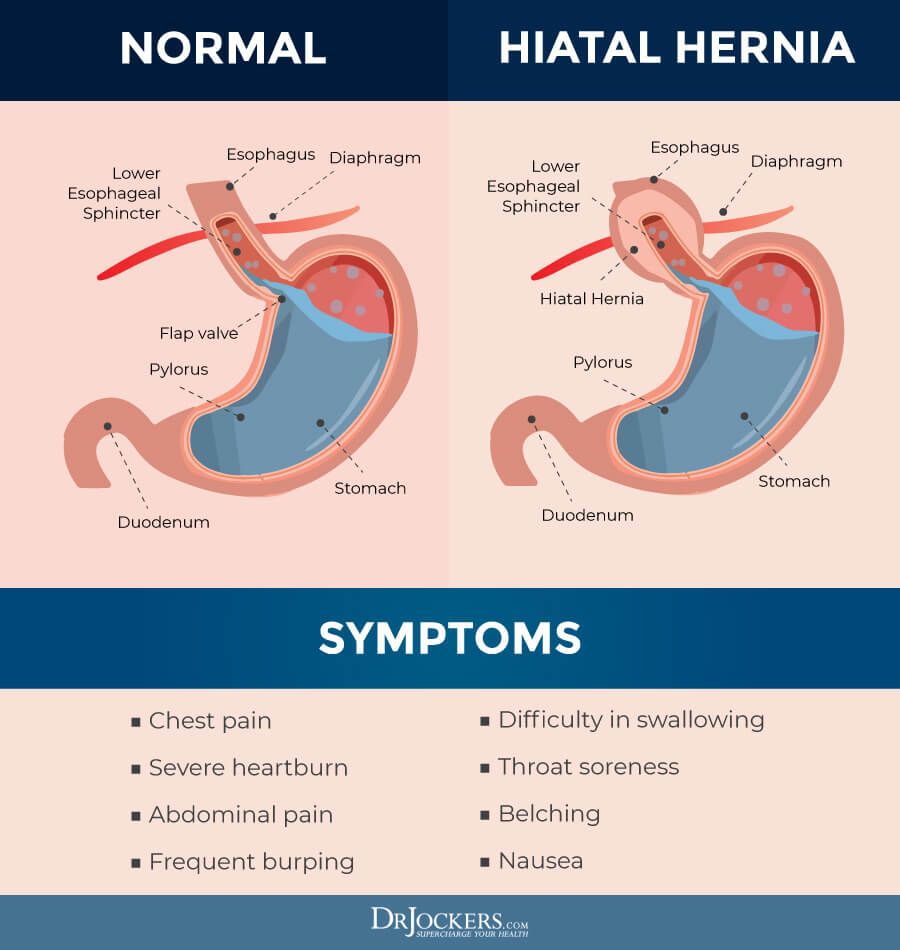 In recent years, these methods have gained great popularity, which became possible due to the creation of perfect synthetic materials and the development of new methods for closing the hernia orifices, which practically guarantee the patient from the occurrence of hernia recurrence. The recurrence rate does not exceed 1% in specialized clinics, regardless of the type of hernia. Despite the skin incision over the hernia, pain after surgery is minimal, because. there is no tension on one’s own tissues. Intensive physical labor is possible a month after the operation, household physical activity is not limited. This allows such operations to be performed on an outpatient basis. A positive point is also the possibility of performing the operation under local or spinal anesthesia, which is especially important for the elderly and patients with heart and lung diseases. Due to its reliability and simplicity, hernioplasty according to the I.L. Lichtenstein method – for inguinal hernias – has received the greatest prevalence.
In recent years, these methods have gained great popularity, which became possible due to the creation of perfect synthetic materials and the development of new methods for closing the hernia orifices, which practically guarantee the patient from the occurrence of hernia recurrence. The recurrence rate does not exceed 1% in specialized clinics, regardless of the type of hernia. Despite the skin incision over the hernia, pain after surgery is minimal, because. there is no tension on one’s own tissues. Intensive physical labor is possible a month after the operation, household physical activity is not limited. This allows such operations to be performed on an outpatient basis. A positive point is also the possibility of performing the operation under local or spinal anesthesia, which is especially important for the elderly and patients with heart and lung diseases. Due to its reliability and simplicity, hernioplasty according to the I.L. Lichtenstein method – for inguinal hernias – has received the greatest prevalence. It is applicable for any type and size of inguinal hernias.
It is applicable for any type and size of inguinal hernias.
Fig. Plastic surgery of the inguinal canal with a mesh polypropylene prosthesis according to Liechtenstein .
Laparoscopic (through punctures of the anterior abdominal wall) methods of hernia repair should also be mentioned. These are operations that are performed under the control of a laparoscope – a device that allows using a mini-video camera to eliminate a hernia from the abdominal cavity without cutting the skin over the hernia. They were born in the early 80s of the twentieth century with the advent of video technology. In most cases, the abdominal wall defect is closed from the inside of the abdominal cavity with a synthetic mesh prosthesis. The frequency of hernia recurrence after this repair is 2-5%, which is determined by the type of hernia and the preparedness of surgeons. Important advantages of these methods are low invasiveness, which means a slight pain syndrome after surgery, short rehabilitation periods (up to a month with physical labor), as well as the possibility of performing bilateral plastics and, if necessary, combined operations in the abdominal cavity through the same punctures of the abdominal wall. Serious disadvantages of this group of methods include the need for general anesthesia (anesthesia), the need to inject gas into the abdominal cavity to create an operative space (dangerous in patients with lung and heart diseases).
Serious disadvantages of this group of methods include the need for general anesthesia (anesthesia), the need to inject gas into the abdominal cavity to create an operative space (dangerous in patients with lung and heart diseases).
Hernia – causes and treatment – health articles
11/10/2022
Hernia – protrusion of the viscera together with the parietal sheet of the peritoneum through a defect in the muscle layer of the abdominal wall under the skin.
A disease may be classified according to its location. Hence the name of the hernia: umbilical, inguinal, intervertebral, dorsal, lumbar, hernia of the white line of the abdomen, subumbilical.
There are also other forms of hernia, more rare – postoperative, lateral, ischial, obturator, perineal, hernia of the obvious process of the sternum.
Causes of a hernia
There can be several reasons for this disease:
- weakening of the anterior abdominal wall that occurs during pregnancy, after childbirth in women or in people leading an inactive life;
- a sharp increase in pressure in the abdomen, for example, when a person lifts weights or when straining while going to the toilet;
- overweight;
- features in the structure of the body;
- Chronic cough or allergy with frequent cough.

A hernia can be caused by a person’s age, recent trauma, or surgery that weakens the muscles. Of course, a hernia can also be hereditary, then the cause is varicose veins, scoliosis, and even flat feet.
Symptoms of a hernia
The most sure sign of the manifestation of the disease is unusual protrusions in the abdominal region. Bulging may appear in the groin, in the navel, or in the scar area if you have recently had surgery. It all depends on the type of hernia.
But not only outwardly it is possible to suspect a disease, symptoms are also such indicators as pain in the abdomen and groin during prolonged standing, during physical exertion, and when lifting weights. A person observes pain when sneezing, coughing, straining.
Umbilical hernia is most common in babies. Usually it passes by half a year, when the child begins to sit and move actively, thereby straining and strengthening the abdominal walls. But if it occurs in children much later, then you need to see a doctor. The disease can appear with frequent constipation, lack of activity, or with a constant cough. If a child complains of pain in the navel and he has protrusions in the same place in a standing position, then this is a sure sign of the appearance of an umbilical hernia. Also, the child may become lethargic, his appetite decreases and apathy occurs.
The disease can appear with frequent constipation, lack of activity, or with a constant cough. If a child complains of pain in the navel and he has protrusions in the same place in a standing position, then this is a sure sign of the appearance of an umbilical hernia. Also, the child may become lethargic, his appetite decreases and apathy occurs.
Inguinal hernia is more common in men and also in boys, especially in infancy. Symptoms are protrusions in the corresponding area, an increase in the scrotum, pain in the lower back, genitals, and when urinating.
A herniated disc causes pain in the legs or in the area of the spine after physical exertion, heavy lifting, bending over, or as a result of an uncomfortable position during sleep or work. There are protrusions in the side of the spinal cord or in the lower back.
Spinal hernia occurs in the lumbar region, neck and chest. Symptoms of such a disease are pain in the corresponding area, weakness in the arms and legs, and sensitivity disorders.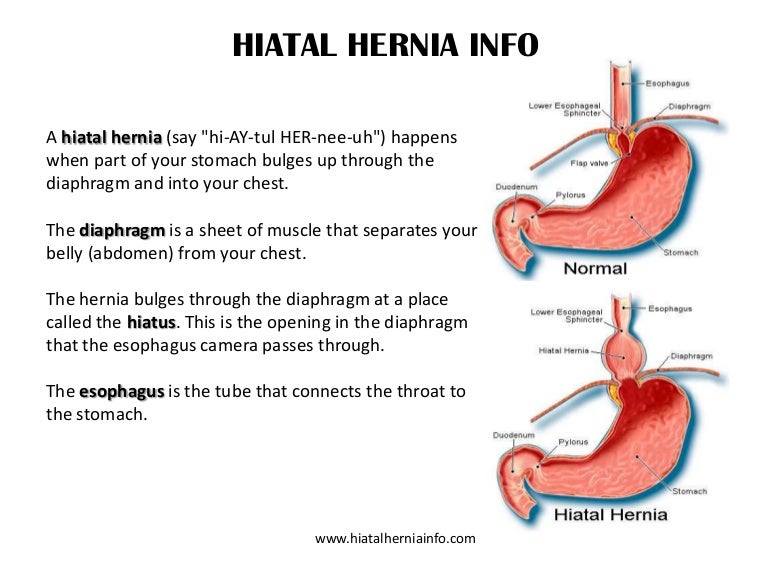
In lumbar hernia, bulges appear on the side or back of the abdomen. This type of disease can be found in a supine position on a sore side – protrusions are visible, but when a person turns over to a healthy side, it disappears.
A hernia of the linea alba is a disease in which preperitoneal fat passes through cracks and holes. With such a hernia, a person may not complain of pain or have it in the epigastric region.
How to identify a hernia
Instrumental methods of examination include a method such as diaphanoscopy, used to distinguish between scrotal hernia and dropsy. It involves examining the scrotum area with a light element.
Physical examination methods: after examining the protrusion, the doctor feels it, determines its density, whether it is reduced into the cavity, and also notes the condition of the natural canals and openings (whether they are enlarged, for example, by inserting a fingertip into the inguinal canal, it is noted that it is not enlarged whether he).